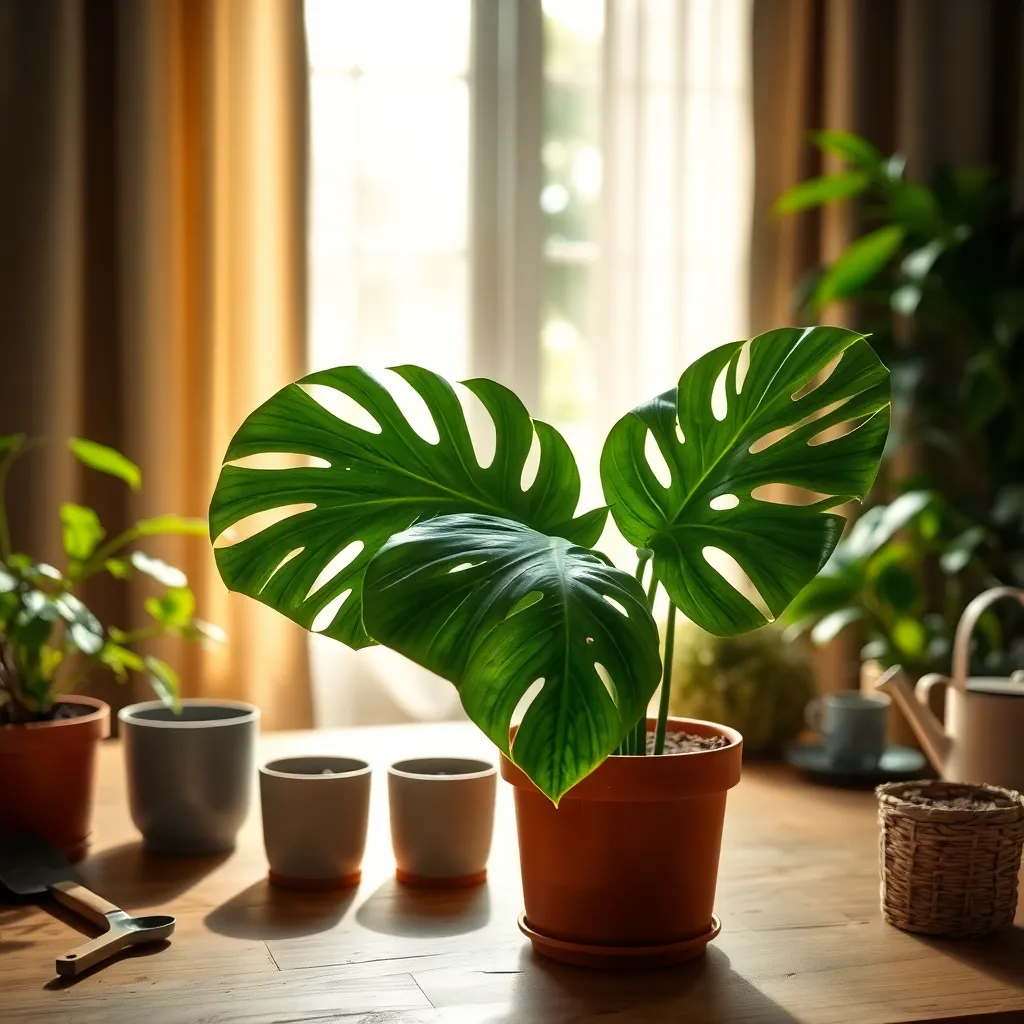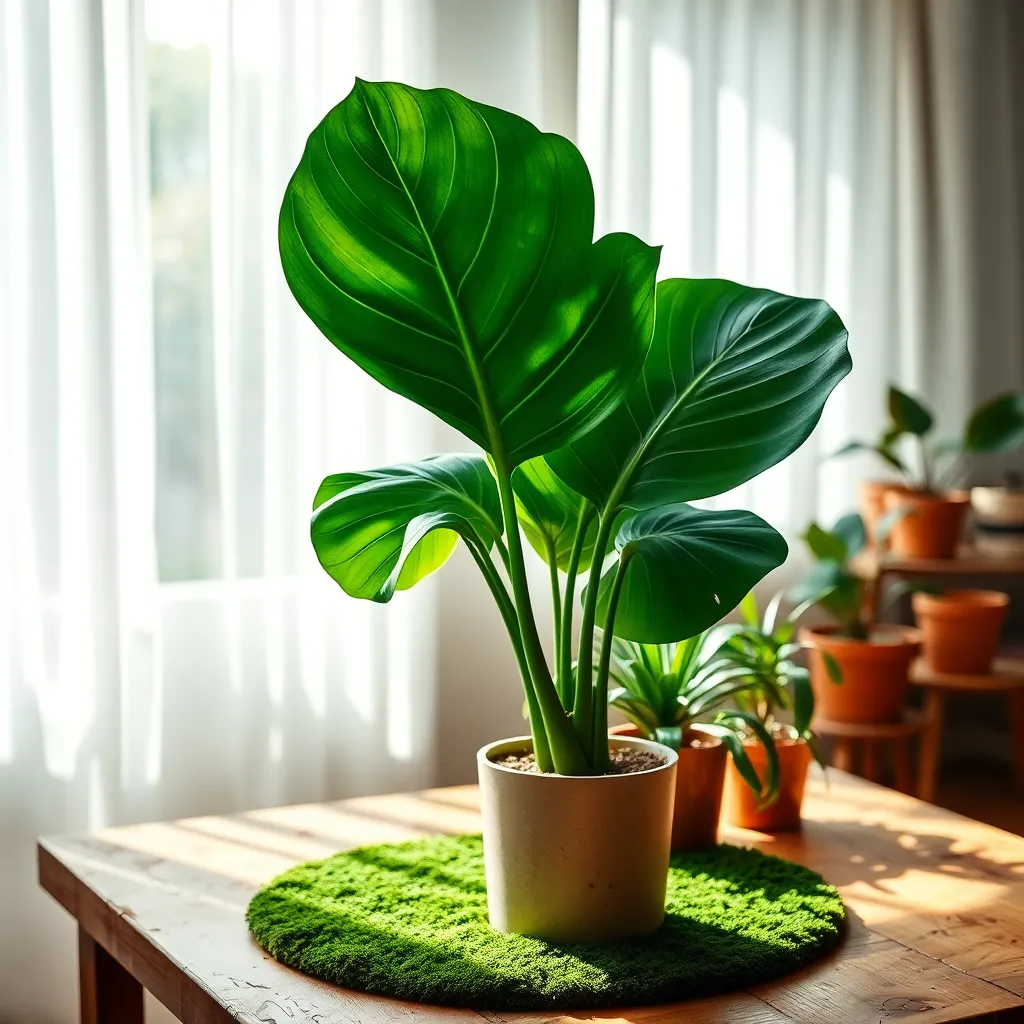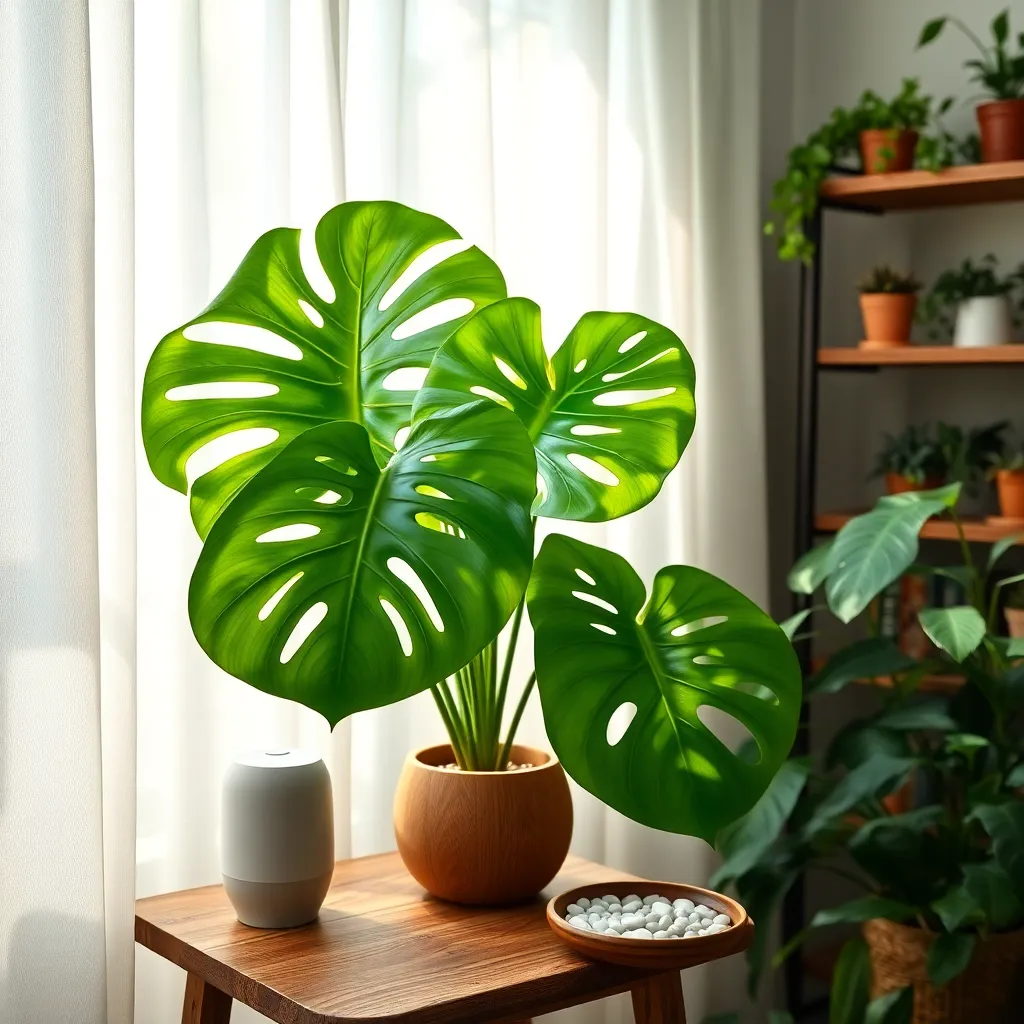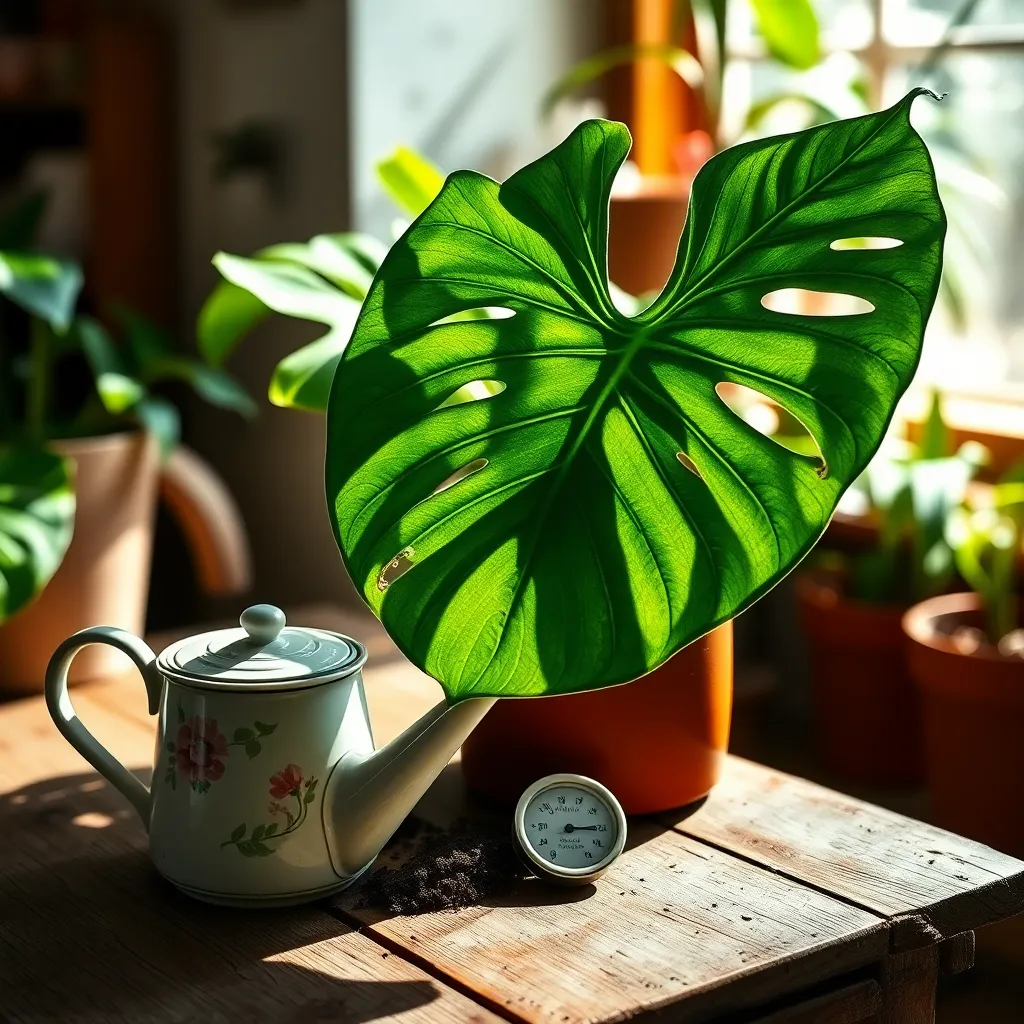Few plants can transform a space quite like the Monstera, with its lush, dramatic leaves and air of tropical elegance. Whether you’re new to the world of indoor gardening or an old hand looking to expand your collection, nurturing a Monstera can be a rewarding endeavor that brings a slice of the jungle into your home.
Understanding how to care for this iconic plant is crucial not only for its health but also for maintaining the verdant charm it brings to any room. In this guide, we’ll delve into the essentials of Monstera care, from light and watering requirements to tips on propagation and troubleshooting common issues.
For the enthusiastic beginner, you’ll discover the basic steps to ensure your Monstera thrives, helping you build confidence as a plant parent. Seasoned gardeners will appreciate our deeper dive into advanced care techniques and creative styling ideas, adding another layer of beauty to your indoor oasis. Whether you’re just beginning your plant journey or refining your green thumb, this article offers valuable insights to help your Monstera flourish.
Select a Suitable Pot Size

When choosing a pot for your Monstera, it’s essential to consider the plant’s current size and growth potential. Select a pot that is 2 to 4 inches larger in diameter than the root ball to allow room for growth without overwhelming the plant with excess soil.
Avoid using a pot that’s too large, as this can lead to overwatering issues. Monsteras thrive in well-draining soil, so ensure your chosen pot has drainage holes to prevent water from pooling at the bottom.
Keep in mind that Monsteras prefer slightly cramped conditions, which encourage healthier growth. Repotting is typically necessary every two to three years as the plant matures, or when roots start to emerge from the drainage holes.
For those looking to maximize their Monstera’s growth, consider using a pot made of breathable materials like terra cotta. This type of pot allows for better air circulation around the roots, which can be beneficial in preventing root rot.
Position in Indirect Sunlight

Monstera plants thrive best in indirect sunlight, which mimics the dappled light of their native rainforest habitats. To achieve this, place your Monstera near a window with sheer curtains or in a well-lit room where it can receive bright, filtered light throughout the day.
Direct sunlight can scorch the leaves, so avoid placing your Monstera in a southern-facing window with hard, direct sunlight. If your home has limited indirect light, consider using a sheer curtain or moving the plant further away from the window to diffuse the light.
For those with limited natural light, grow lights can be a great alternative, providing consistent and controlled light conditions. Choose a full-spectrum LED grow light and position it about 12 inches above the plant, keeping it on for 12-14 hours a day to simulate natural light cycles.
Regularly rotate the plant every couple of weeks to ensure even growth as Monsteras tend to lean towards their light source. This simple action encourages your plant to grow symmetrically and prevents one-sided growth, keeping your Monstera lush and balanced.
Maintain Optimal Humidity Levels

Humidity plays a crucial role in the health of your Monstera plant, which thrives best in a humid environment. Aim to maintain a relative humidity level of 60% to 70% to mimic their natural tropical habitat.
An easy way to increase humidity around your Monstera is by using a humidifier, especially during the dry winter months. Alternatively, you can place a tray of water near the plant, allowing evaporation to boost the surrounding humidity levels naturally.
Grouping your Monstera with other plants can also create a more humid microclimate. As a more advanced technique, try misting the leaves lightly, but be cautious to avoid over-wetting, which can lead to fungal issues.
Regularly check the humidity levels using a hygrometer, a handy tool that ensures you’re consistently meeting your plant’s needs. If you’re struggling with low humidity, consider relocating your Monstera to a more humid room, like a bathroom with good indirect light.
Water When Soil Is Dry

Ensuring your Monstera thrives indoors starts with understanding its water needs. Water your Monstera only when the top inch of soil feels dry to the touch, as it helps prevent overwatering, which is a common mistake.
To check soil moisture, simply insert your finger into the soil up to the first knuckle. If it feels dry, it’s time to water; if it’s still damp, wait a few days and test again.
When watering, make sure to water thoroughly until excess flows out of the drainage holes. This ensures that the entire root system receives adequate moisture, promoting healthy growth.
It’s beneficial to use well-draining potting mix, such as a blend of peat moss, perlite, and pine bark. This type of soil helps to prevent water from pooling around the roots, reducing the risk of root rot.
Consider using a moisture meter for more precise moisture monitoring, especially if you’re unsure about soil conditions. Advanced gardeners may appreciate the consistency that a moisture meter provides, ensuring they meet their plant’s specific needs.
Prune Regularly for Growth

To promote a lush and healthy Monstera plant, it is essential to prune regularly. This helps manage the plant’s size and encourages new growth, resulting in a fuller appearance.
Start by identifying any dead or yellowing leaves, as these should be removed promptly. Use clean, sharp scissors or pruning shears to make precise cuts, reducing the risk of disease spreading.
Focus on cutting just above a node, where the leaf meets the stem, to encourage new shoots. Regular pruning not only improves the plant’s shape but also redirects energy to healthy leaves and stems.
For more advanced care, consider pruning to control the plant’s vertical growth. This is particularly useful if your Monstera is becoming too large for its indoor space, allowing you to maintain its beauty and health indoors.
Conclusion: Growing Success with These Plants
Caring for your Monstera plant isn’t just about keeping it alive; it’s about nurturing a thriving relationship with a living being right in your home. We explored five key concepts: understanding its light needs, ensuring proper watering, maintaining optimal humidity, providing essential nutrients, and recognizing signs of distress. Each of these elements is crucial to fostering a healthy, vibrant plant relationship. Now that you’re equipped with this knowledge, take a moment to examine your Monstera’s current environment and make one positive change today—perhaps adjusting its placement to receive better indirect sunlight or checking its soil moisture.
Remember, consistent care leads to flourishing results, not just in plants but in all relationships. Save or bookmark this article as your go-to guide for nurturing your Monstera, ensuring you have the tools to support its growth at your fingertips. With each step you take, you’re not only enhancing your home but also honing skills that reflect on your broader ability to cultivate successful relationships. Let’s look forward to a future where every connection you tend to, plant or person, thrives because of your mindful and proactive care.

